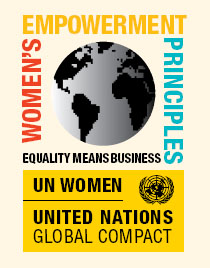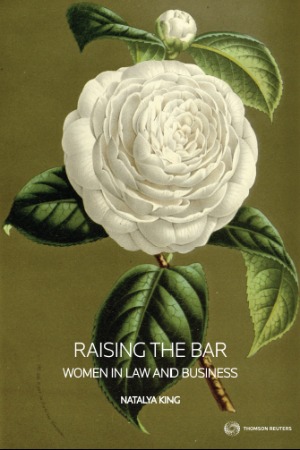Are banks the gender equality champions of New Zealand’ workplaces?
 For the second year running the White Camellia Awards, presented to members of New Zealand’s business community in recognition of progress towards set gender equality goals, have been dominated by banks.
For the second year running the White Camellia Awards, presented to members of New Zealand’s business community in recognition of progress towards set gender equality goals, have been dominated by banks.
The Awards, whose stakeholders include New Zealand’s UN Women Committee, the Equal Employment Opportunities Trust, the Human Rights Commission, and the Federation of Business and Professional Women New Zealand, recognize the progress of member organisations towards implementation of the Women’s Empowerment Principles.
The white camellia is a symbol of women's suffrage in New Zealand. White camellias were worn by the suffragettes and given to members of parliament who, in 1893, supported the right for women to vote. The flower is also depicted next to Kate Sheppard on New Zealand's $10 note.
The Principles themselves are the work of a joint project between the United Nations Entity for Gender Equality and the Empowerment of Women (UN Women) and the United Nations Global Compact. There are over 750 signatories globally, 40 of whom are New Zealand companies. The object of the Principles is to provide tangible guidance on how to empower women in the workplace, marketplace and community.
The big bank advantage - Why are banks winning awards?
In 2013, banks won five of the seven awards, with ASB taking out the top prize. This year, the supreme award was won by BNZ, with ASB, Westpac and BNZ claiming three of the six remaining categories. Marked changes in 2014 were the inclusion of a law firm for the first time (Bell Gully, for equal opportunity, inclusion and non-discrimination), and the inclusion of retailer Farmers (for health, safety, and freedom from violence). Non-banking industry winners in 2013’s inaugural awards were Coca-Cola Amatil NZ (who sponsored this year’s awards) and Deloitte (who this year won the award for education, training and development for the second year running).
One reason for the banking industry’s dominance of these awards is likely to be the simple lack of participation from other industries. The awards are open only to businesses that have signed up to the Principles and met the reporting requirements. As at the date of this article, all five of the major New Zealand banks were WEP signatories, but only two of the big four accounting firms (PricewaterhouseCoopers and Deloitte), and three of the big eight law firms (Bell Gully, DLA Phillips Fox and recently Chapman Tripp) had confirmed their support. Of the NZX 20, only three are Principles signatories (Mighty River Power, SkyCity Entertainment Group and Z Energy).
But this general disengagement extends beyond simply not signing up to the Women’s Empowerment Principles. As the Thomson Reuters publication Raising the Bar: Women in Law and Business identifies, female representation on boards of directors for New Zealand’s NZX100 sits at around 15%, but female representation on the boards of directors for New Zealand banks is just over 25% (Neither statistic being particularly positive). As for diversity policies, while other jurisdictions such as the UK and Australia require publicly listed companies to disclose their diversity policies and report on progress towards meeting diversity objectives, the NZX simply recommends that listed companies have a diversity policy in place.
... only half of the top eight law firms appear to have any publicly identifiable diversity policies
For a different perspective, while all five of the major banks have well publicised diversity policies in place (extending beyond gender diversity), only half of the top eight law firms appear to have any publicly identifiable diversity policies or internal initiatives for gender equality in the workplace. A 2013 Deloitte study found that that lack of dedication to diversity was a common theme for New Zealand’s businesses:[1]
“Although numerous individual conversations suggest that diversity is seen as an important priority … diversity is ranked as the top talent challenge by only 1% of respondents. Further, special programmes to promote attraction, retention, and engagement of diverse groups are offered by less than 30% of responding organisations. Finally, diversity initiatives are not seen as highly important to future business success.”
…
“Digging deeper, generally few organisations have special programmes in place today to promote attraction, retention, or engagement of specific types of employees.”
Understanding why gender diversity is good for business
 The Women’s Empowerment Principles operate on the accepted assumption that gender diversity makes business sense, in that “[e]qual treatment of women and men is not just the right thing to do – it is also good for business.”[2] Or as Equal Opportunities Commissioner, Dr Jackie Blue noted at the 2014 awards ceremony, “Signing up to WEPs is basically the smart thing to do. Investing in women in the workplace pays huge dividends for consumers, employees and business productivity.”
The Women’s Empowerment Principles operate on the accepted assumption that gender diversity makes business sense, in that “[e]qual treatment of women and men is not just the right thing to do – it is also good for business.”[2] Or as Equal Opportunities Commissioner, Dr Jackie Blue noted at the 2014 awards ceremony, “Signing up to WEPs is basically the smart thing to do. Investing in women in the workplace pays huge dividends for consumers, employees and business productivity.”
That is a theme that is explored in detail in Raising the Bar. As the book identifies, the key issue for business in New Zealand in terms of gender diversity is a general lack of awareness about how gender diversity influences the culture of a business and what that means for the bottom line of the business. The problem is not that people do not agree that gender diversity is a good idea in general, but that people do not understand the ways in which increased gender diversity in an organisation has a positive effect on business profitability, breeds a better workplace culture, allows businesses to better respond to their customers, and has a flow on effect for diversity in a macro sense.
BNZ shares its strategies in its Diversity Case Study
That last benefit is an aspect well understood by this year’s White Camellia Award supreme winner BNZ. As BNZ’s People and Communications Director, Annie Brown, identifies, “being a leader on this front isn’t just about us, it’s also about sharing knowledge with other businesses and organisations.” To that extent, BNZ has publicly shared six strategies BNZ has found to be crucial in working towards gender diversity within its organization:[3]
- Significant attitude changes need to be driven from the top. Visible leadership and endorsement from the CEO, senior leaders and every single manager at every single level is crucial to entrenching diversity as part of a company’s culture;
- Ensure you have buy-in from senior leaders by demonstrating a clear link between gender diversity and business strategy. (As explained above, people generally believe in gender diversity, they just don’t understand how it works to benefit their business goals).
- Keep refining and reworking your policies and process.
- Be courageous. Brown notes that “outdated attitudes can often be a barrier to cultural change within an organisation.” It can take time to make a proper change. Be patient.
- Encourage dialogue, debate, respect and inclusion. As Brown notes, ensuring everyone can contribute to the debate “might be about encouraging people to speak honestly in meetings or it could be about using internal social media channels to their full extent and not shying away from responding to difficult comments.”
- Set targets or clear identifiable measures. As Brown states, “what gets measured gets done.”
This last aspect is perhaps the key to the banking industry’s success in progress towards gender equality: a signatory to the Women’s Empowerment Principles is required to set goals and report on progress. And that commitment to progress can only mean a corresponding success, both in progress towards gender diversity, and in business productivity.
Or, as Deloitte puts it:[4]
“We see gender and racial diversity as lead indicators of a healthy organisation rather than an end in themselves. To put it more bluntly, these data points indicate that an organisation is ‘fishing from a bigger pool of talent’, accessing a deeper knowledge bank and leveraging those resources throughout the business value chain. The story is not about the increased representation of a particular demographic group bringing extra ‘sparkle’ to the workplace because of their special skills and talents. Rather, the story is about organisations with a more diverse talent pool, especially at senior levels, manifesting a workplace culture of openness, merit and rational decision making.”
About the book
Raising the Bar: Women in Law and Business is available from Thomson Reuters NZ. The book examines the progress and participation of women in New Zealand’s legal and professional services industries, and presents a practical blueprint for positive change.
Raising the Bar takes a close look at the way in which women’s progress has stagnated over the last twenty years, and analyses the legislative, policy and social reasons for such stagnation. The book breaks down international research to explain the societal benefits of gender diversity, and, in particular, how diversity within a business increases profit and productivity.
About the author
 Natalya King's book Raising the Bar started life as a Master’s thesis, focusing solely on women in the legal profession. It was a result of her questioning with other female law students about how their careers would map out and in particular, how they could combine career and family. The scope grew as she became more and more fascinated with the subject.
Natalya King's book Raising the Bar started life as a Master’s thesis, focusing solely on women in the legal profession. It was a result of her questioning with other female law students about how their careers would map out and in particular, how they could combine career and family. The scope grew as she became more and more fascinated with the subject.
More information on the Women’s Empowerment Principles is available here: weprinciples.org/Site/PrincipleOverview/.
Footnotes
[1] Deloitte Talent Edge New Zealand – 2013: Addressing worrisome gaps (March 2013) at 5, 16.
[2] UN Global Compact and UN Women “CEO Statement” Women’s Empowerment Principles : www.weprinciples.org/Site/CeoStatement/.
[3] Adapted from Bank of New Zealand Diversity delivers a distinct competitive advantage (Bank of New Zealand Diversity Case Study, 2014). and from Annie Brown, Diverse Workforces a Competitive Advantage for all New Zealand Businesses at http://nzlead.com/diverse-workforces-a-competitive-advantage-for-all-new-zealand-businesses/ * October 2014
[4] Human Capital Australia/Deloitte Only Skin Deep? Re-examining the business case for diversity (September 2011).
